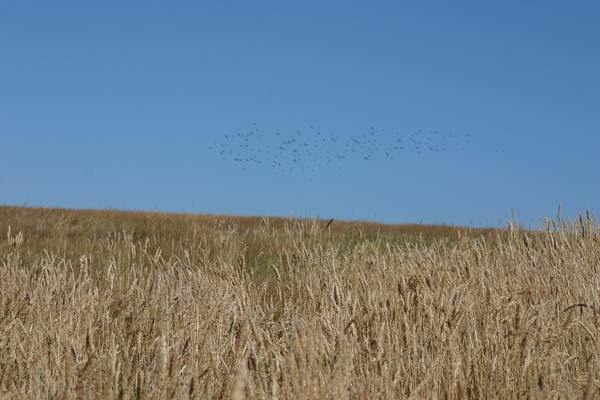Saturday is the last day of the San Juan County Fair. The 33rd annual Friday Harbor 8.8K Loop Run will take place.
But a lot of the spotlight will be on the American Camp rabbits.
Rep. David Obey, chairman of the U.S. House Appropriations Committee, will lead a delegation Saturday to San Juan Island National Historical Park. The visit is reportedly part of a committee visit to national parks in the region.
Ellis Brachman of the committee staff said the delegation will arrive Saturday “and will spend a few days visiting San Juan Island and meeting with Park officials. They depart Monday.”
The committee’s visit is reportedly related to funding for the National Parks, but some local residents want to focus the committee’s attention on the plan to remove rabbits from the American Camp prairie.
Coinciding with the congressional visit, members of Save Our Bunnies will rally from 10:15-11:45 a.m. on the corner of Spring Street and Argyle Avenue, in front of Wells Fargo Bank.
San Juan Island National Historical Park proposes removing the European rabbits, an introduced species, from the American Camp prairie in order to facilitate prairie restoration and protect cultural resources — resources park officials say are threatened by the rabbits’ burrowing.
One of the removal methods proposed: shooting.
The local National Park office reported receiving 71 submitted comments regarding the rabbit removal plan. But Save Our Bunnies reports it submitted 350 petition signatures calling for an alternative to killing the rabbits.
“We also want transparency regarding the activities of the National Park Service at both American Camp and English Camp …” the petition states.
Save Our Bunnies is also concerned about the use and impact of herbicides on the prairie.
Only 3 percent of prairies remain
Prairies are increasingly rare in Western Washington. All told, the American Camp prairie is about 600 acres, almost the same size as Mima Mounds Natural Area Preserve in Littlerock. Mima Mounds is managed by the state Department of Natural Resources.
Hannah Anderson, who coordinates the recovery of rare species for the Nature Conservancy, said “not more than 3 percent of the historic extent” of Washington’s prairies exist today, gone to make way for agriculture and development.
Anderson said prairies are important because they are home to rare and declining species, including animals, insects and plants that only live on prairies. Prairie grasses help sustain some of the world’s oxygen. “There’s a huge biomass in grasses,” she said
“Each prairie is its own special system. When we have so little left, we have to conserve what remains.”
Rabbit population in decline
The rabbit population is at its lowest since 1985, according to National Park rabbit population counts. The population in winter 1973 was estimated at 8,400 on 827.8 acres of prime habitat, and 1,700 on 415.1 acres at American Camp. The population in spring 2005 was estimated at 1,818 on 173 acres of prime habitat at American Camp.
University of Washington’s College of Forest Resources estimated the population on those 173 acres as between 95 and 330 in 2009 and 414-884 this year. Many rabbits can now be found in hedgerows near the laundress’ quarters and the Eagle Cove boundary.



